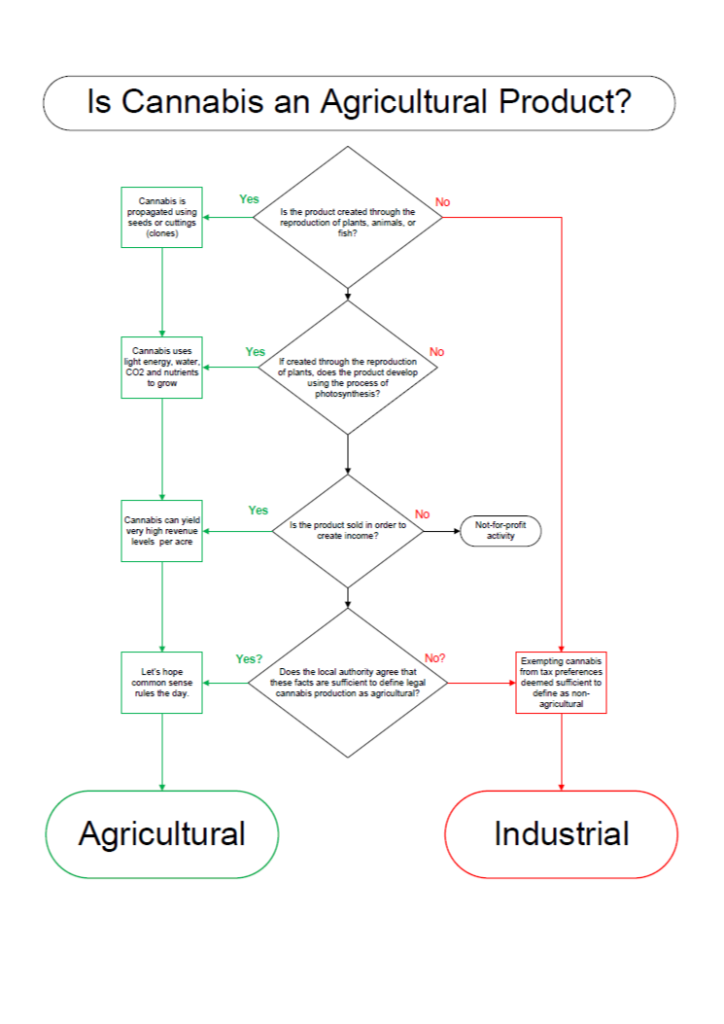By Dr. Jim MacRae* CASP Research Associate and Steve Hyde CASP Director of Communications
The production and processing of cannabis, as sanctioned under I-502, is continuing to see localized opposition from what appear to be micro-clusters of neighbors who, for various reasons, do not wish to have such facilities located near their properties.
In response, some local authorities have initiated processes that add additional restrictions on where such businesses can locate. Some jurisdictions have created environments in which the effort, cost, and time necessary to achieve all permits necessary for local legal operation is increased dramatically.
One common tactic that such authorities have used to rationalize these prohibitionist actions is to frame the production and processing of cannabis as being industrial in nature, and not agricultural.
When a local authority denies that growing cannabis is agriculture, they can call it pretty much whatever they wish to call it. The tendency seems to be to use labels aimed at framing the growing of cannabis as an industrial activity.
This severely restricts the zones that most land-use matrices consider appropriate for the growing and processing of this particular crop. It also tends to force legal cannabis farms to locate in areas where neighbors may not be particularly compatible with the production of clean, safe harvests.
SB-6505 was passed last year in an effort to maximize the collection of I-502 excise taxes, through denying all agricultural tax exemptions from cannabis production and processing. This seems to be the basis of local confusion regarding the agricultural nature of cannabis production and ancillary processing such as trimming/pruning, drying, and curing. Unfortunately, this confusion is compromising the ability of I-502 producers and processors to exercise their Right to Farm and, as such, is putting this State’s long-standing Right to Farm environment at risk.
The following graphic was created to serve as a community tool to help you educate and remind local authorities and concerned citizens that:
-when you plant a cannabis seed
-and give it water, light and fertilizer
-it will attempt to use photosynthesis to grow
-and can yield a profitable crop.
A crop that can help farm families keep their farms …. just like any other plant.
*This graphic was inspired by the recent experiences of Dr. MacRae in Snohomish County, where he is a Tier 1 Producer/Processor applicant wishing to use a sub-2000 sq.ft. greenhouse to grow his crop. He also wishes to use that greenhouse for processing (drying and curing). Under current Snohomish County rules, he is not able to do that, in part because the “industrial” activity of curing and drying bud may only be conducted in a structure built to F1 Industrial Building Code standards. In a further run-on extension of this circular (my peers did not think I should say idiotic) logic, the proliferation of such F1 IBC buildings containing legal cannabis in rural areas apparently constitutes an emergency that has resulted in almost 200,000 acres of Snohomish County zoned R5 being no longer deemed appropriate for the use of legal cannabis production or processing.
A PDF of this chart is available here. Please download, reproduce, and share widely!
